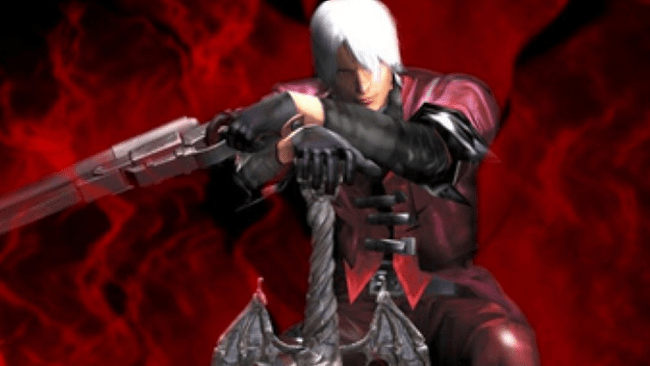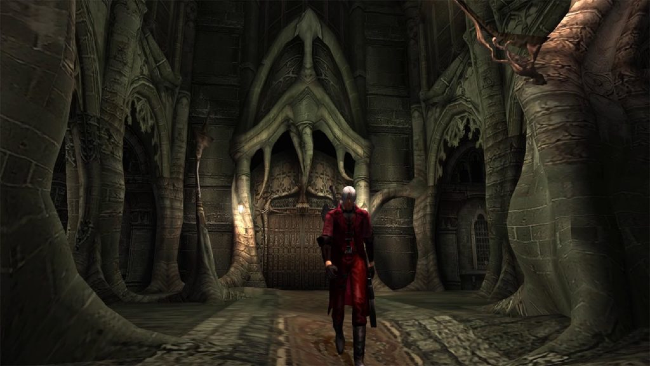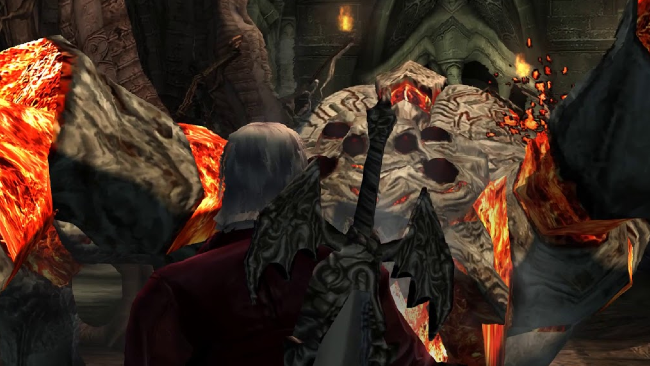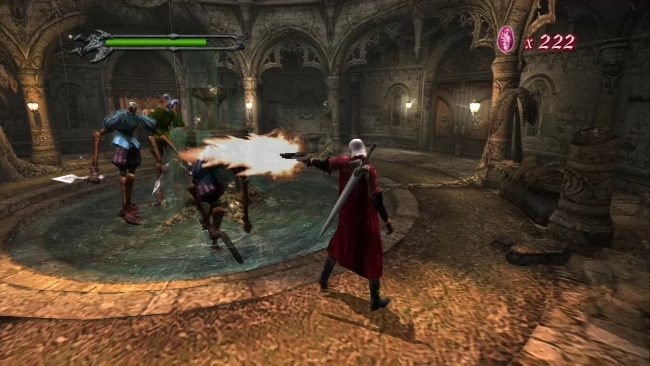2001’s Devil May Cry was a trailblazer when it released 20 years ago. Early 3D action combat was typically clumsy when compared to many 2D beat ‘em ups, often being tainted by imprecision, repetition, and a general lack of the visceral satisfaction that one would expect from clobbering baddies. It’s no secret that Capcom’s 2001 gothic hack ‘n’ slash rewrote the rulebook, mitigating those flaws, but it’s rarely noted as still being one of the genre’s best even after the numerous iterations that have followed. In honor of its 20-year anniversary, I’d like to examine Devil May Cry’s strengths; why it’s still a must-play for anyone with an interest in stylish action titles.
Originally starting development as a prototype build of Resident Evil 4, there’s some familiar DNA and unlikely comparisons to be drawn between the two. Yet, despite early Resident Evil’s slow-grinding horror and Devil May Cry’s pulsating action being worlds apart, the latter benefits greatly from the provenance of the former’s underlying influence. Where this is felt most prominently is in the level design and atmosphere.
Devil May Cry 20 Years – The Devil’s in the Details
Taking place entirely on Mallet Island (outside of the introductory and ending cutscenes), there’s a clear connective tissue between each of Devil May Cry’s arenas and environments, giving the game’s environments a sense of logical placement and immersion that’s absent in most other action games. The world isn’t a stomping ground of straightforward combat arenas for Dante to hack and slash through; it’s a relatively realistic place, populated by a castle, outdoor courtyards, sewage systems, cathedrals, and more. “Realistic” might be a slight misnomer, given the fantastical architecture, moody, otherworldly lighting, and color schemes, but it only feels a couple of steps removed from being a potentially inhabitable world.
The marginal haunted twists on a conventional castle/island location are what drives the flavor of the game’s tinges of horror, however, as well as the aforementioned atmosphere. Mallet Island is clearly a location based within reality, but one that’s warped by malevolent, otherworldly beings. It’s not the type of horror that drives someone away, or undercuts the ludicrous fun of launching a demonic enemy into the air before blasting them away with a shotgun shell, but one that ignites a tinge of curious adventure, and keeps the player guessing.
This attention to contextualizing and connecting its locations is a clear Resident Evil imprint, yet Devil May Cry streamlines many of the aspects of those titles to better suit the context and flow of action gameplay. The game is segmented into short chapters, with each having its own short-term objectives, meaning that the title can keep a sense of constant momentum as well as its cohesive world. There’s never any concern about getting lost within the large areas, or having to backtrack because of a missed key item like in Resident Evil.
Devil May Cry’s noteworthy sound design also plays a key role in alluring the player. When wandering the castle halls, ominous twangs of organs fill the soundscapes, while Dante’s footsteps outside of the castle’s walls are only met with the sounds of quiet, whistling winds. When it’s time for combat, the game’s soundtrack changes its tune, with speeding synths and punchy percussion accompanying the proceedings. Despite having no shortage of exhilarating tunes to work with, it knows when to dial down the volume and let the player soak in the world before the next round of demon slaying.
One Tactical Demon Slayer
As with any great action game, the combat itself is where Devil May Cry shines the brightest. Unlike in later entries, where styling on opponents with extensive combos takes precedence, proficiency and speed are the most vital attributes to success. Dante is a bit of a glass cannon, with even the basic Marionette enemies being able to shave off large chunks of his health with a few successful hits. Making knowledge of enemy patterns, and insight of the optimal weapons to use in retaliation to each enemy type is just as essential to the player’s arsenal as Dante’s own abilities.
The game’s first main boss fight, Phantom, is a key example of this philosophy. Coming in the form of a giant magma-infused spider, Phantom can block most attacks with its surrounding hardened carapace legs, meaning that unlike with other enemy’s fought prior, damage can only be dealt to it in one specific spot: the top of his head. It takes experimentation to figure this out, and Phantom’s hard-hitting attacks can make it incredibly imposing for new players, but by utilizing the helm-splitter attack, and Dante’s newly acquired Devil Trigger ability, it can be taken out in a flash, so long as its counter swipes are avoided. Another trick is Phantom’s fireball attacks, which can be countered with a timely sword swing, reflecting the powerful projectiles back for large damage.
While Phantom’s weaknesses are more accentuated than most of Devil May Cry’s foes, these exploits are still an essential part of combat. Other enemy tricks, such as Shadows having a complete immunity to Dante’s firearms until their cores are exposed, or Frosts being weaker to the flaming Ifrit gauntlets, are quirks commonly utilized throughout the title’s duration.
These aren’t subservient punching bags that fold after taking some damage either. They bare their fangs and fight with a furious vigor seldom seen outside of the likes of 2004’s Ninja Gaiden and the higher difficulties of Bayonetta. While later instalments in the Devil May Cry franchise focus on player expression through combat, encounters in the original outing feel more tactical, as the player must continually take note of spacing, time their attacks, and know when to take a step back after making jabs.
While complexity is easily equitable with quality in the action genre, it can come in all shapes and sizes. Devil May Cry’s first outing gives players a substantially smaller move pool to work with, but achieves a feeling of engaging cerebralism within its own restrictions through considerate enemy design, alongside an engrossing atmosphere and evocative level design. It doesn’t play like its younger brethren, but it’s within those differences where its strengths lie.











